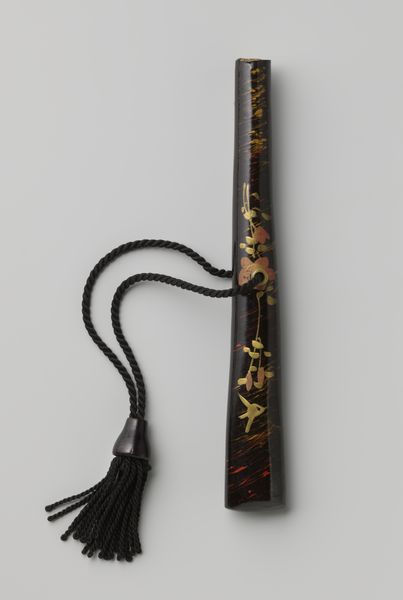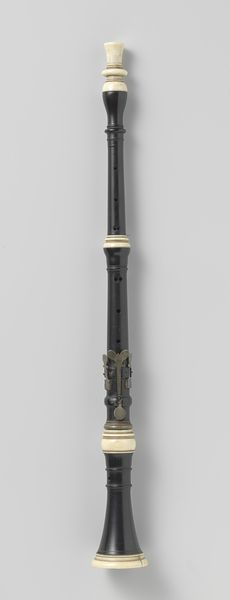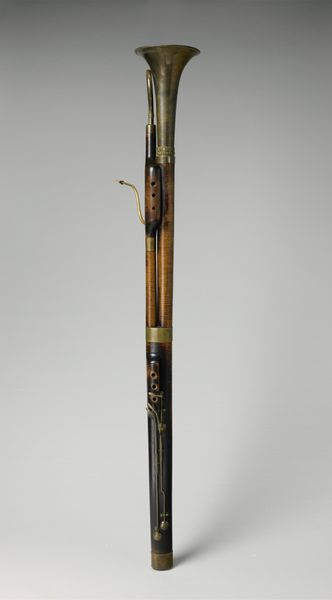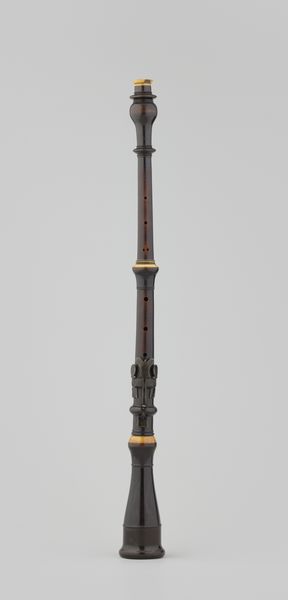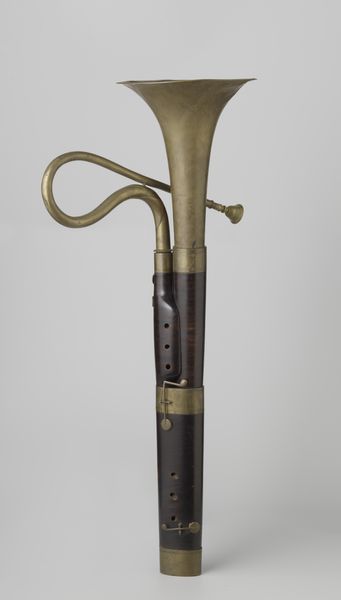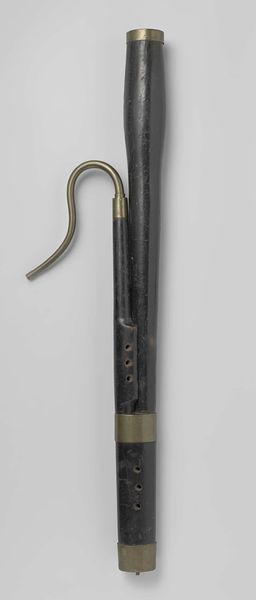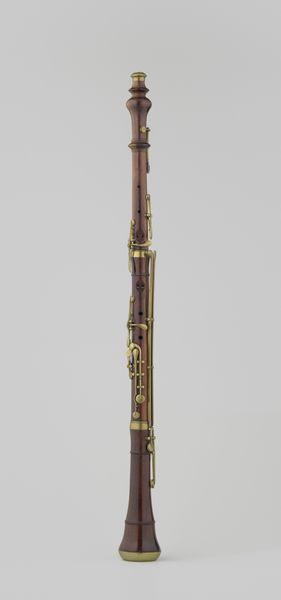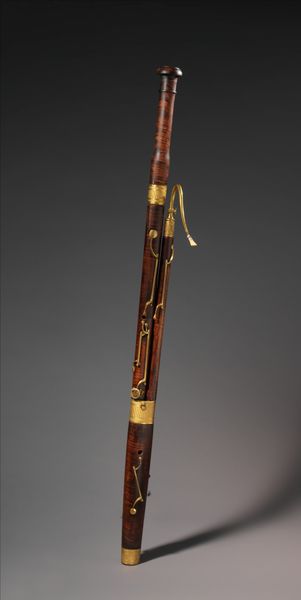
Handvat van zwartgelakt hout beschilderd met een vogel en een bloem, voor een paraplu of parasol; met een koord c. 1910 - 1920
0:00
0:00
wood
#
wood
#
japonisme
#
decorative-art
Dimensions: length 22 cm, diameter 2.6 cm
Copyright: Rijks Museum: Open Domain
Editor: This object, housed here at the Rijksmuseum, is a black lacquered wood handle dating from about 1910 to 1920. It was created as a handle for a parasol or umbrella, and is delicately painted with a bird and floral motif, complete with a cord and tassel. There's a stillness to it that I find compelling, despite its miniature size. How would you interpret this piece within its historical context? Curator: What strikes me immediately is its engagement with Japonisme, a movement where European artists were heavily influenced by Japanese art and design. Notice the elegant, flowing lines, the emphasis on natural motifs like the bird and flowers. These elements suggest an appropriation of Japanese aesthetics. But who was this umbrella for, and what did its design signify in its original social context? Was it purely decorative, or did the imagery carry specific cultural weight for the owner, hinting at status or taste? Editor: That's a fascinating question. The addition of the cord and tassel does suggest it wasn’t just functional but served as an accessory. Was there a market for these types of objects that explicitly looked to the "Orient," and how did they navigate questions of authenticity? Curator: Precisely! This wasn’t just about imitation. The "Orientalism" tag leads me to think of the power dynamics at play. The market existed, fuelled by colonial narratives that exoticized Eastern cultures. The degree of authenticity is irrelevant because, for a western audience, what mattered was the perception of "the Orient," and an appeal to bourgeois taste that reinforced prevailing societal power structures. So, we are less concerned with if the wood is from Japan but that a Japanese consumer might interpret the object, or if indeed any Japanese craftsperson participated in its creation. It forces us to examine assumptions of ownership and the politics of imagery. Editor: So, beyond its aesthetic charm, this umbrella handle prompts deeper questions about cultural appropriation and representation, especially within the framework of colonial history? Curator: Exactly! Its beauty invites us in, but its context demands critical engagement. Editor: I’ll definitely be thinking about this in future gallery visits! Thank you.
Comments
No comments
Be the first to comment and join the conversation on the ultimate creative platform.
